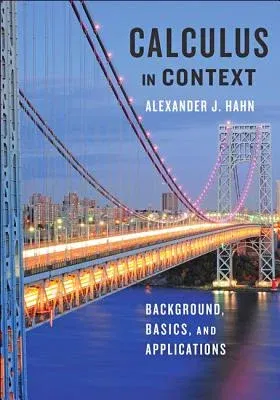A new approach to teaching calculus that uses historical examples and
draws on applications from science and engineering.
Breaking the mold of existing calculus textbooks, Calculus in Context
draws students into the subject in two new ways. Part I develops the
mathematical preliminaries (including geometry, trigonometry, algebra,
and coordinate geometry) within the historical frame of the ancient
Greeks and the heliocentric revolution in astronomy. Part II starts with
comprehensive and modern treatments of the fundamentals of both
differential and integral calculus, then turns to a wide-ranging
discussion of applications. Students will learn that core ideas of
calculus are central to concepts such as acceleration, force, momentum,
torque, inertia, and the properties of lenses.
Classroom-tested at Notre Dame University, this textbook is suitable for
students of wide-ranging backgrounds because it engages its subject at
several levels and offers ample and flexible problem set options for
instructors. Parts I and II are both supplemented by expansive Problems
and Projects segments. Topics covered in the book include:
- the basics of geometry, trigonometry, algebra, and coordinate
geometry and the historical, scientific agenda that drove their
development
- a brief, introductory calculus from the works of Newton and Leibniz
- a modern development of the essentials of differential and integral
calculus
- the analysis of specific, relatable applications, such as the arc of
the George Washington Bridge; the dome of the Pantheon; the optics of a
telescope; the dynamics of a bullet; the geometry of the pseudosphere;
the motion of a planet in orbit; and the momentum of an object in free
fall.
Calculus in Context is a compelling exploration--for students and
instructors alike--of a discipline that is both rich in conceptual
beauty and broad in its applied relevance.

